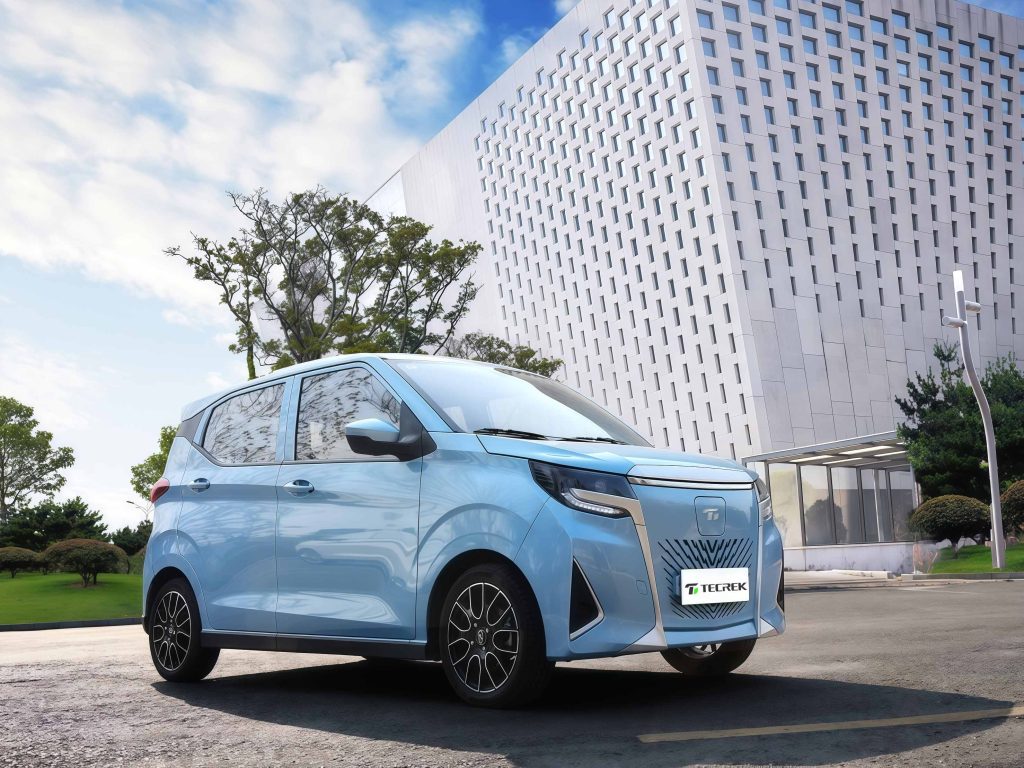Winter Electric Vehicle Performance: The Cold-Weather Recharge Challenge is emerging as a critical issue for the global EV industry. As many regions worldwide enter extended cold seasons, electric vehicles face setbacks in battery range, charging speed, and energy efficiency. From Tairui’s vantage, understanding how winter conditions affect vehicle systems, charging infrastructure, and user experience is vital for designing resilient mobility solutions.

1. Why Cold Weather is a “Stress Test” for EVs
1.1 Effects of low temperatures on battery and range
Cold climates hit electric vehicles hard: chemical reactions slow, battery internal resistance rises, cell efficiency drops, and cabin heating demands increase. Independent testing shows many EVs fall to less than half their rated range at –15 °C or lower.
These drop-offs threaten real-world usability and contribute to what drivers call “range anxiety”.
1.2 Charging delays and slower refuels
Not only do vehicles lose range, but charging performance is also degraded. In cold weather, charging rates are reduced and thermal management systems must work harder, adding time and energy cost. This means that attempts at “fast recharging” in winter become less reliable.
1.3 Infrastructure and user experience strain
For fleets and commercial applications particularly, winter conditions reveal weak links: insufficient fast-charging stations in cold zones, outdated thermal management in vehicles, and driver concerns about waiting time. From Tairui’s perspective, satisfying “reliable winter mobility” becomes a differentiator.
2. Key Strategies to Overcome Winter EV Limitations
2.1 High-voltage platforms and advanced thermal systems
Adopting 800 V+ architectures, improved battery heaters, and dedicated insulation help limit cold-weather losses. These systems reduce charging times and mitigate efficiency drop-offs. For example, advanced heat-pump systems recover cabin heat with less energy loss.
Tairui is integrating these features in its next generation vehicle platforms to ensure strong winter behaviour.
2.2 Smart charging protocols and pre-conditioning
Vehicle pre-heating, battery thermal pre-conditioning and optimized charging curves for low ambient temperatures can preserve range and speed. Charging stations in cold zones must also provide ambient-temperature compensation and strategic placement to minimize outage risk.
2.3 Infrastructure expansion in cold zones
To support winter-resilient performance, charging networks must be dense, reliable and temperature-hardened. Operators must deploy stations with cold-weather rated connectors, heated enclosures, and fast turnaround. From Tairui’s viewpoint, collaborating with infrastructure providers in regional cold corridors is a priority.
2.4 Vehicle-infrastructure co-design
Because winter performance is not simply a vehicle issue, systems must be co-designed: vehicle architecture, charging hardware, grid interface and service patterns. Tairui emphasises that OEMs should work with charging network operators, grid utilities, and software providers to deliver a seamless experience even in deep cold.
3. Why This Matters for Commercial and Global Markets
3.1 Heavy-duty and fleet segments have harsher burdens
Commercial vehicles operate through all seasons and geographies. For logistics, cold starts, range losses, delayed charging all translate into cost. The phrase “winter electric vehicle performance” is particularly relevant to light-duty trucks, delivery vans and fleet vehicles. Tairui, producing specialty vehicles and parts, sees this as a major growth area for winter-verified electric solutions.
3.2 Emerging markets and extreme climates
Regions such as northern Europe, Canada, Russia and China’s north-east expose EVs to severe winters. While many electric vehicle rollouts happen in mild climates, the real global frontier is “winter-ready operations”. Failure to ensure performance under cold conditions may limit EV adoption in these key markets.
3.3 Consumer confidence and market differentiation
For individual buyers too, confidence in performance across all seasons is important. If a vehicle loses half its range in winter or takes long at the charger, the brand reputation suffers. Tairui positions itself on offering reliable all-season mobility, differentiating from brands that excel only in mild climates.
4. How Tairui is Addressing Winter EV Challenges
4.1 Designing for resilience, not compromise
Tairui’s vehicle platforms are built with thermal management at their core: battery packs with active heating, chassis with insulation, software that monitors ambient and pack temperature. This ensures “winter electric vehicle performance” is baked in, not added later.
4.2 Ecosystem partnerships and real-world validation
Tairui collaborates with charging infrastructure operators, cold-region fleet operators and grid utilities to validate systems in sub-zero environments. Through field tests, Tairui ensures its vehicles deliver reliable recharge performance, fast turnaround and robust range.
4.3 User experience and service readiness
Passenger vehicles, vans or trucks by Tairui offer pre-conditioning, intelligent route planning for winter range, and integrated charger-locator systems. By assuring drivers that their vehicle is prepared for cold conditions, Tairui aims to build trust and lower perceived risk.
5. The Road Ahead: Winter-Ready Electric Mobility
As the global transition to electrification intensifies, the concept of winter electric vehicle performance will become a standard benchmark — not a niche test. Manufacturers and ecosystem partners must build for all seasons if they aim for broad market success.
Tairui expects that within five years, vehicles offering less than ~70 % of summer range in cold weather will be considered non-competitive. Brands that invest in winter-specific engineering, infrastructure integration and service readiness will lead.
In the increasingly diverse global EV market, differentiation will shift from “Who has the biggest battery?” to “Who can guarantee performance in the toughest conditions?” Tairui is placing its bets on the latter: from cold-zone logistics to northern-latitude passenger mobility, we aim to deliver vehicles that don’t just function in winter — they excel.
Conclusion
In conclusion, winter electric vehicle performance is more than a technical checkbox—it is an essential pillar for market credibility, commercial viability and global adoption. Vehicles and chargers must perform reliably across extreme temperatures, demanding cohesive system design, infrastructure alignment and user-centric engineering.
At Tairui, we recognise that delivering all-season confidence in electric mobility is not optional—it is foundational. As the world expects more from EVs, we are committed to ensuring our products deliver not just in summer, but also when the thermometer drops.
